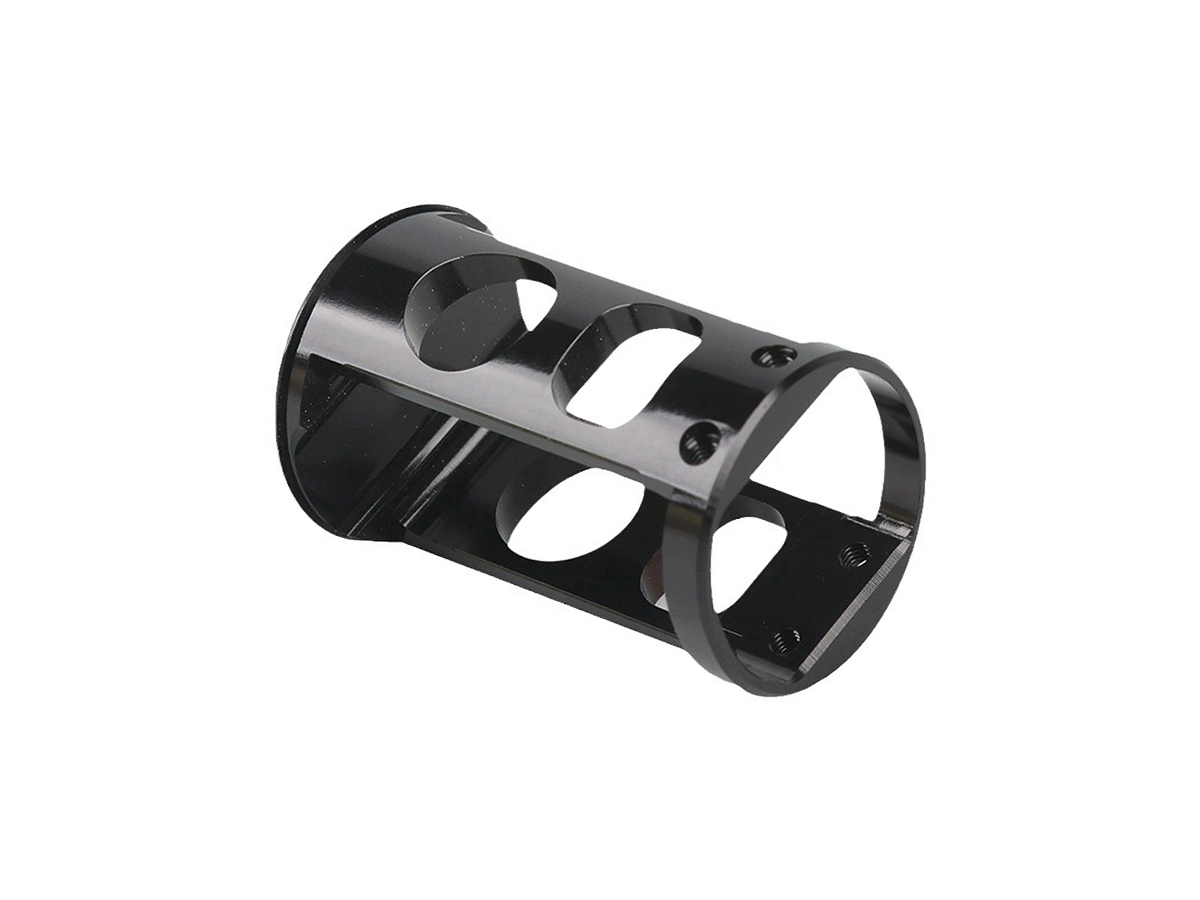Lightweight Aerospace Components: CNC Machined Plastic Parts
Introduction to Lightweight CNC Machined Plastic Parts for Aerospace
Aerospace applications require materials that are not only strong but also lightweight, as reducing weight is essential for improving fuel efficiency and overall performance. CNC machined plastic parts are increasingly used in the aerospace industry to meet these stringent requirements. Plastics such as PEEK, ABS, and polycarbonate offer excellent strength-to-weight ratios and the necessary durability to withstand the demanding conditions of aerospace environments.
CNC machining of plastic components allows for producing high-precision, lightweight parts like brackets, housings, panels, and insulation materials. These parts help reduce the weight of aerospace vehicles while maintaining structural integrity, performance, and safety, making them essential for modern aerospace design.
Material Performance Comparison for Plastic Parts in Aerospace
Material | Tensile Strength (MPa) | Thermal Conductivity (W/m·K) | Machinability | Corrosion Resistance | Typical Applications | Advantages |
|---|---|---|---|---|---|---|
90-1000 | 0.25 | Excellent | Excellent | Aerospace components, insulation | High strength, excellent temperature resistance | |
55-70 | 0.2 | Excellent | Good | Transparent panels, windows | High impact resistance, optical clarity | |
40-50 | 0.25 | Excellent | Good | Interior components, covers | Cost-effective, easy to machine | |
80-90 | 0.2 | Excellent | Moderate | Insulation parts, bearings | High wear resistance, toughness |
Material Selection Strategy for Plastic Parts in Aerospace
PEEK (Polyether Ether Ketone) is a high-performance plastic with tensile strengths ranging from 90 to 1000 MPa, depending on the grade. This material is ideal for aerospace components that require high strength and excellent temperature resistance. PEEK's resistance to wear and ability to perform in high temperatures make it perfect for insulation, connectors, and housings.
Polycarbonate (PC) is widely used for transparent panels and windows in aerospace. With a tensile strength of 55-70 MPa and excellent impact resistance, it offers optical clarity combined with toughness, making it an essential material for components that need both durability and transparency.
ABS (Acrylonitrile Butadiene Styrene) is commonly used for cost-effective interior parts and covers in aerospace applications. With a tensile strength of 40-50 MPa, it is easy to machine and provides a good balance of strength, durability, and affordability for non-structural components.
Nylon (PA – Polyamide) offers excellent wear resistance and toughness, making it suitable for durable parts under mechanical stress, such as bearings and insulation. With a tensile strength of 80-90 MPa, it performs well in applications where high-impact resistance is needed.
CNC Machining Processes for Plastic Parts in Aerospace
CNC Machining Process | Dimensional Accuracy (mm) | Surface Roughness (Ra μm) | Typical Applications | Key Advantages |
|---|---|---|---|---|
±0.005 | 0.2-0.8 | Brackets, panels | High precision, complex geometries | |
±0.005-0.01 | 0.4-1.2 | Bushings, connectors | Excellent rotational accuracy | |
±0.01-0.02 | 0.8-1.6 | Mounting holes, ports | Accurate hole placement | |
±0.002-0.005 | 0.1-0.4 | Surface-sensitive components | Superior surface smoothness |
CNC Process Selection Strategy for Plastic Parts in Aerospace
Precision CNC Milling is ideal for producing high-precision plastic components such as brackets and panels. With tight tolerances (±0.005 mm) and fine surface finishes (Ra ≤0.8 µm), this process allows for the creation of complex geometries needed for aerospace applications where accuracy is critical.
CNC Turning is used for cylindrical plastic parts such as bushings and connectors, ensuring exceptional rotational accuracy (±0.005 mm). This process guarantees that parts fit precisely, providing the functionality of components used in aerospace systems.
CNC Drilling ensures accurate hole placement (±0.01 mm), which is crucial for creating mounting holes and ports required for component assembly in aerospace systems. This process guarantees that parts align properly during assembly, reducing the risk of misalignment.
CNC Grinding is employed to achieve superior surface finishes (Ra ≤ 0.4 µm) on plastic parts. This process ensures that parts like sealing components have smooth surfaces that minimize wear and improve overall performance in aerospace environments.
Surface Treatment for Plastic Parts in Aerospace
Treatment Method | Surface Roughness (Ra μm) | Corrosion Resistance | Hardness (HV) | Applications |
|---|---|---|---|---|
0.4-1.0 | Excellent (>1000 hrs ASTM B117) | 400-600 | Aerospace components, housings | |
0.2-0.6 | Excellent (>800 hrs ASTM B117) | 1000-1200 | Plastic covers, structural parts | |
0.1-0.4 | Superior (>1000 hrs ASTM B117) | N/A | Aerospace components, high-performance surfaces | |
0.2-0.8 | Excellent (>1000 hrs ASTM B117) | N/A | Heat-resistant plastic parts |
Typical Prototyping Methods
CNC Machining Prototyping: High-precision prototypes (±0.005 mm) for functional testing of lightweight plastic aerospace components.
Rapid Molding Prototyping: Fast and accurate prototyping for plastic parts like housings, panels, and brackets used in aerospace systems.
3D Printing Prototyping: Quick-turnaround prototyping (±0.1 mm accuracy) for initial design validation of plastic components.
Quality Inspection Procedures
CMM Inspection (ISO 10360-2): Dimensional verification of plastic parts with tight tolerances.
Surface Roughness Test (ISO 4287): Ensures surface quality for precision components used in aerospace applications.
Salt Spray Test (ASTM B117): Verifies corrosion resistance performance of plastic parts in harsh environments.
Visual Inspection (ISO 2859-1, AQL 1.0): Confirms aesthetic and functional quality of plastic components.
ISO 9001:2015 Documentation: Ensures traceability, consistency, and compliance with industry standards.
Industry Applications
Aerospace: Lightweight plastic housings, panels, and insulation parts.
Automotive: Lightweight components, structural parts, and interior elements.
Consumer Products: Plastic covers, enclosures, and functional components.
FAQs:
Why are plastics used in aerospace components?
How does CNC machining improve the precision of plastic parts?
Which plastic materials are best for aerospace applications?
What surface treatments enhance the durability of plastic parts in aerospace?
What prototyping methods are best for plastic components used in aerospace?

